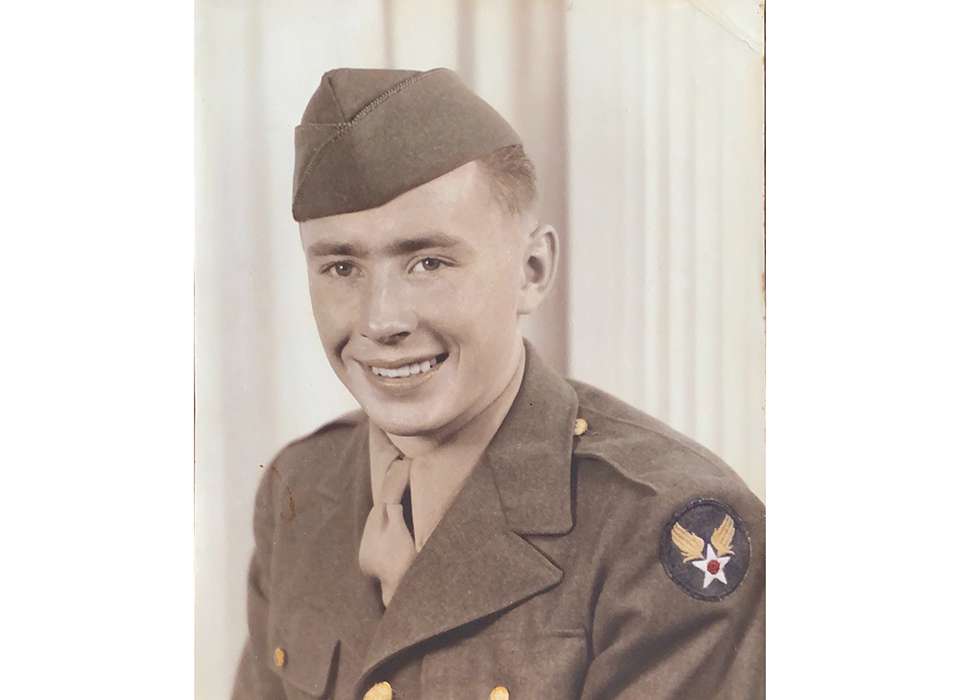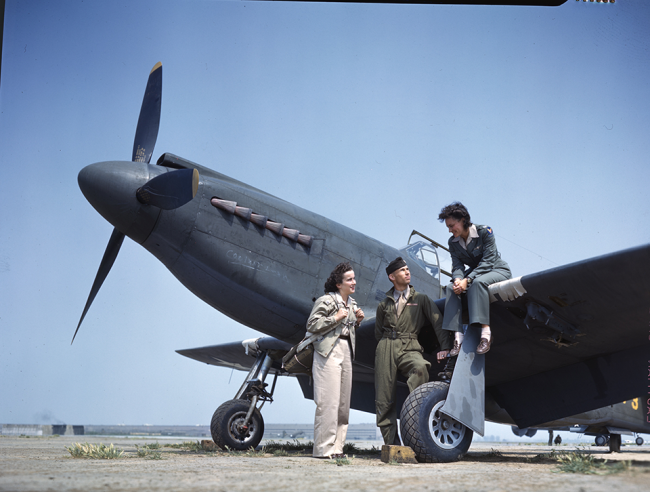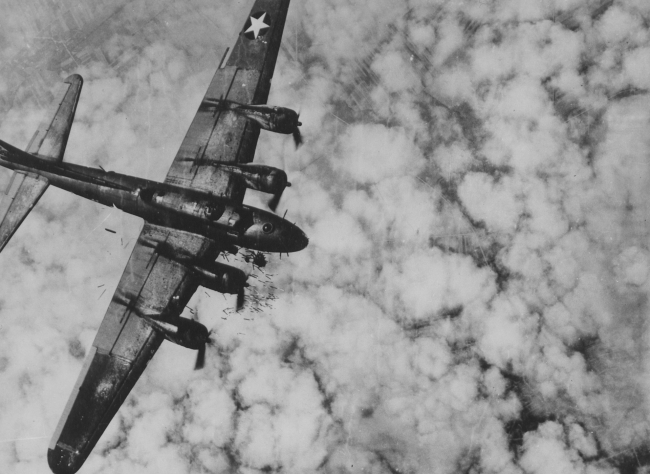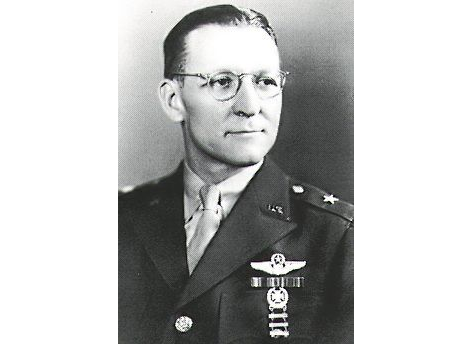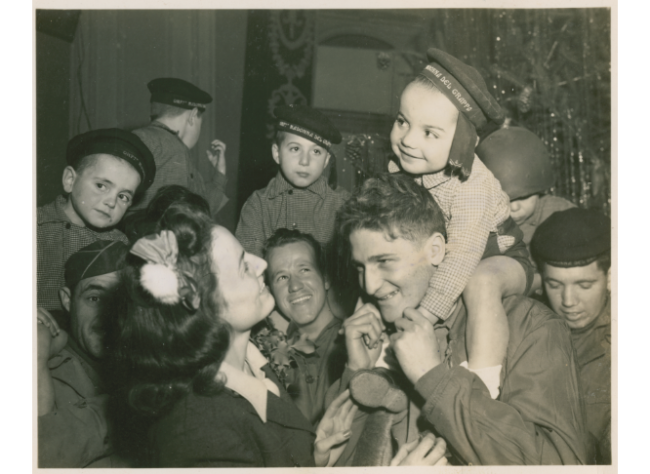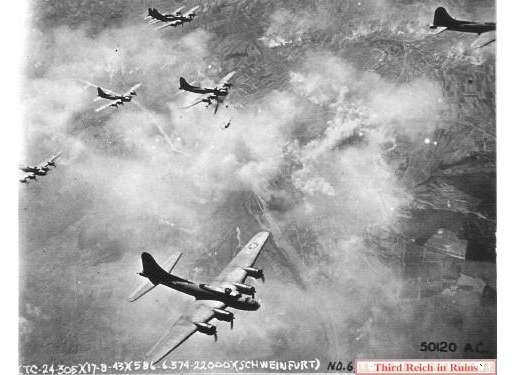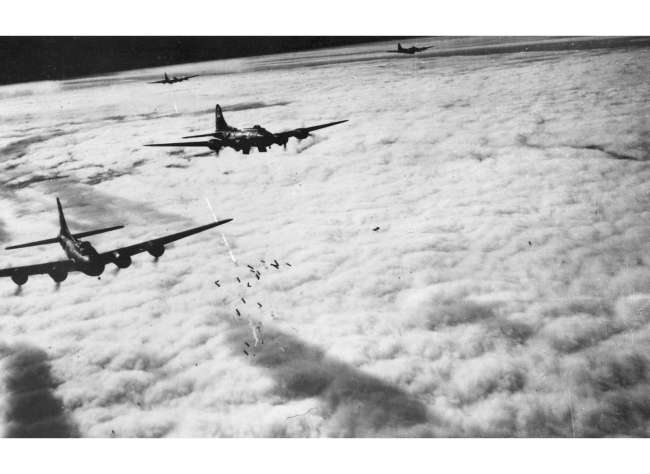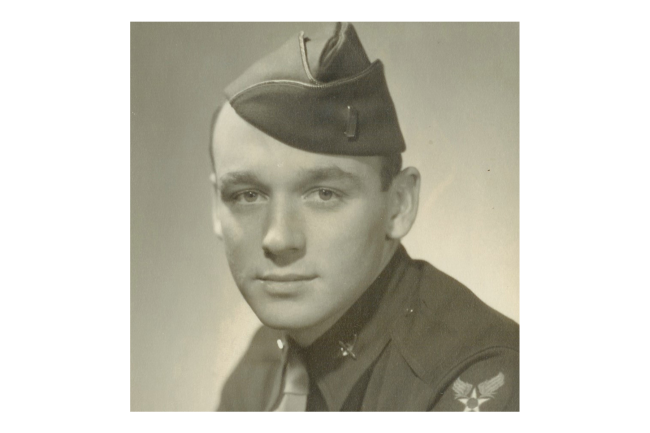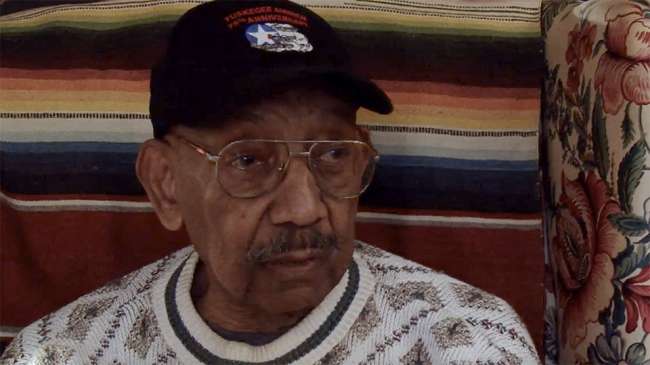Top Image: Robert G. Aldous during aircraft armorer training in Denver Colorado. May 1944. Citation: Courtesy of the Aldous family.
All things considered, few people will ever know what it is like to fight in a war. Robert Aldous knows what it’s like to fight in two of them—World War II and Korea. Aldous was born in Ogden, Utah and grew up in the nearby town of Huntsville. He was in church on Sunday, December 7, 1941 when he learned of the Japanese attack on Pearl Harbor, and while he did not know the extent to which that event would affect his life, he did know that he would end up in the military at some point. He also knew he wanted to get into aviation, so after graduating high school in May 1943, he went to Salt Lake City, Utah and volunteered for service with the US Army Air Corps.
Aldous went on active duty in August 1943 and was sent to Sheppard Field in Wichita Falls, Texas for basic training. For Aldous, the physical training in the intense summer heat was unbearable, so when one of the base’s shipping sergeants presented him with an opportunity to leave the place, he took it. The sergeant arranged for Aldous to join a College Training Detachment at Texas Tech University, so off he went to Lubbock, Texas for a semester of college courses. When the semester ended, Aldous was sent to Santa Ana Army Air Base for Classification where it would be determined which crew position he would be trained for. Unfortunately, he was washed out during the cadet screening process, which ended his chances of becoming a pilot, copilot, navigator, or bombardier. Instead, he was trained as an aircraft armorer and aerial gunner.
On December 24, 1944, after completing all of his training, Aldous was deployed to Nadzab, New Guinea where he joined the 319th Bombardment Squadron, 90th Bombardment Group, 5th Air Force as a top turret gunner on a B-24 Liberator four-engine bomber. He and his crew then flew to the island of Biak and began flying combat missions, the very first of which was to strike a target in Davao, Mindanao in the Philippines. After flying a few missions from Biak, the 90th Bomb Group moved their operations up to Tacloban, Leyte, Philippines and continued flying sorties. From there, they moved to Mindoro where they stayed for some time before moving to Okinawa where Aldous finished out his combat tour.
Aldous had only been at Tacloban for a short time when he had his first experience that made him realize he was really in a war. While cleaning his Browning ANM2 .50 caliber machine guns after a mission, he witnessed the result of a B-24 that had collided with a C-47 cargo aircraft carrying roughly 20 infantrymen on their way to Australia for some much-needed R&R. There were no survivors on either aircraft. It was the first truly traumatic thing Aldous had seen during the war and it stuck with him for quite some time.
More than a quarter of the combat missions Aldous flew were against targets on the island of Formosa, present day Taiwan. At the time, the Japanese were using Formosa as a staging area and springboard for moving replacement troops, ammunition, food, and other supplies to their forces that were still putting up fierce resistance in the Philippines. Unfortunately for Aldous and his crew, the Japanese had also placed numerous anti-aircraft guns in strategic locations around Formosa. Those guns were able to put up accurate and intense fire which made flying missions over the island very risky.
While many of their flights over Formosa and other target areas were “eventful,” there were two missions that Aldous took part in that stand out to him. The first was a mission to central Formosa during which a 120mm anti-aircraft shell passed through the wing of his B-24 just behind the number three engine. The shell exploded and shrapnel ripped through the plane wounding all of the gunners in the center and rear of the aircraft, but Aldous didn’t get a scratch. They returned to base, replaced the wounded crewmen, and within a few days were again flying combat missions.
The other memorable mission took place on July 24, 1945. On that day, the 90th Bomb Group had orders to bomb an airfield in Shanghai, China. For this mission, Aldous’ brand-new B-24 was loaded with 80 100-pound bombs mounted on 40 tandem mounts. Being the second plane in the formation, they were to drop their bombs as soon as the lead aircraft dropped theirs. When the bombardier hit the salvo button to release the bombs over the target, however, nothing happened. He tried again and still the bombs failed to release. Aldous’ aircraft was rapidly losing its place in the formation and had to do something quick.
The pilot called Aldous out of his top turret and told him to “get into the bomb bay and get rid of all those bombs.” Aldous climbed onto the catwalk that ran between the tandem-mount bomb shackles. The bomb bay doors were open and the wind, which was far below freezing at altitude, was whipping below them at more than 200 miles per hour. Aldous held onto a rail with one hand and, using the screwdriver he held in his other hand, managed to release all 80 bombs. It was, in Aldous’ words, “a very, very white-knuckle experience.” Fortunately, that turned out to be his final combat mission of World War II. Sometime later he was sent to Luzon. After arriving in Manila, he boarded a Dutch ship for a 28-day voyage home.
Aldous arrived back in the United States in October 1945 and was discharged that same month at Fort Douglas, Utah with the rank of staff sergeant. During the discharge process, Aldous was asked if he wanted to take an hour to listen to a lecture on joining the Reserves, or if he wanted to get out immediately by joining the Reserves without attending the lecture. By the time the last syllable of the word “immediately” left the lips of the discharging officer, Aldous had joined the Reserves and was already out of the door. The decision to not wait one more hour, however, cost him a year “when the Korean War started and I was called back.”
In August 1950, Aldous returned to active duty with the US Air Force Reserve as a gunner on B-29 bombers. He was assigned to the 343rd Bombardment Squadron, 98th Bombardment Group and sent to Yokota Air Base in Fussa, Japan. The 98th Bomb Group was one of the first to be deployed during the Korean War and was made up largely of WWII veterans who, like Aldous, were Reservists who had been called to active duty. The missions they flew were primarily strikes on railyards, bridges, and troop concentrations. Aldous flew 32 combat missions with the 98th Bomb Group, many of them with Major Frank Kappeler as his aircraft’s radar operator. Kappeler had taken part in the Doolittle Raid early in World War II and was a popular member of the crew.
Though the missions Aldous flew during the Korean War were similar to those he flew during World War II, he did have one experience that was rather unique. While serving as a gunner on B-24s in the Pacific theater, Aldous was constantly fired upon by anti-aircraft guns on the ground, but only once did he ever see Japanese fighters in the air. Aldous readied himself for the coming fight, but before the enemy aircraft got anywhere near his bomber, they were intercepted by friendly fighters and chased off.
Five years later, during a mission over North Korea, Aldous’ B-29 was flying through “Mig Alley,” about 20 miles south of the Yalu River, when it was jumped by enemy fighters. At the time, Aldous was manning the left waist gun position. Unlike the waist gun positions on B-17s and B-24s, which were equipped with only one Browning ANM2 .50 caliber machine gun, the fire control system on the B-29 allowed the waist gunner to take control of the two bottom turrets and the tail gun assembly.
Therefore, when a North Korean Mig-15 fighter got a little too close, Aldous engaged the plane with six .50 caliber machine guns. The enemy fighter had been attacking from below and stalled right in front of Aldous for some reason. Aldous let loose with a six-round burst from each of the guns under his control and is certain he hit the enemy jet with all or most of the rounds he fired. The enemy plane nosed down and disappeared from sight. An escorting F-86 Sabre saw a plane go down and crash but did not see who had shot it down, so Aldous was credited with a “probable.” It was the only time in 74 combat missions and two wars that he ever fired at an enemy aircraft.
Aldous completed his tour of duty with the 98th Bomb Group in the summer of 1951. He returned to the United States and was discharged for the last time in August of that year as a staff sergeant. He then went on to have a nearly 40-year career as a school teacher, principal, and school administrator. And while his students likely had no idea that the soft-spoken gentleman teaching their class had ever been in battle, Robert Aldous is a warrior who stepped up to answer his nation’s call to arms on two separate occasions.
Joey Balfour
Joey Balfour is the Assistant Director of Oral History at The National WWII Museum and oversees the collection, preservation, of curation of the interviews housed in the Museum’s Oral History Collection.
Cite this article:
MLA Citation:
APA Citation:
Chicago Style Citation:
